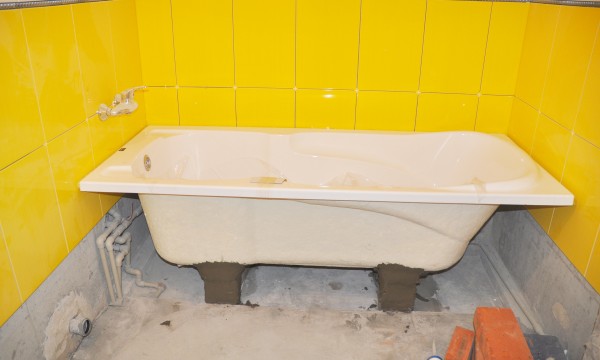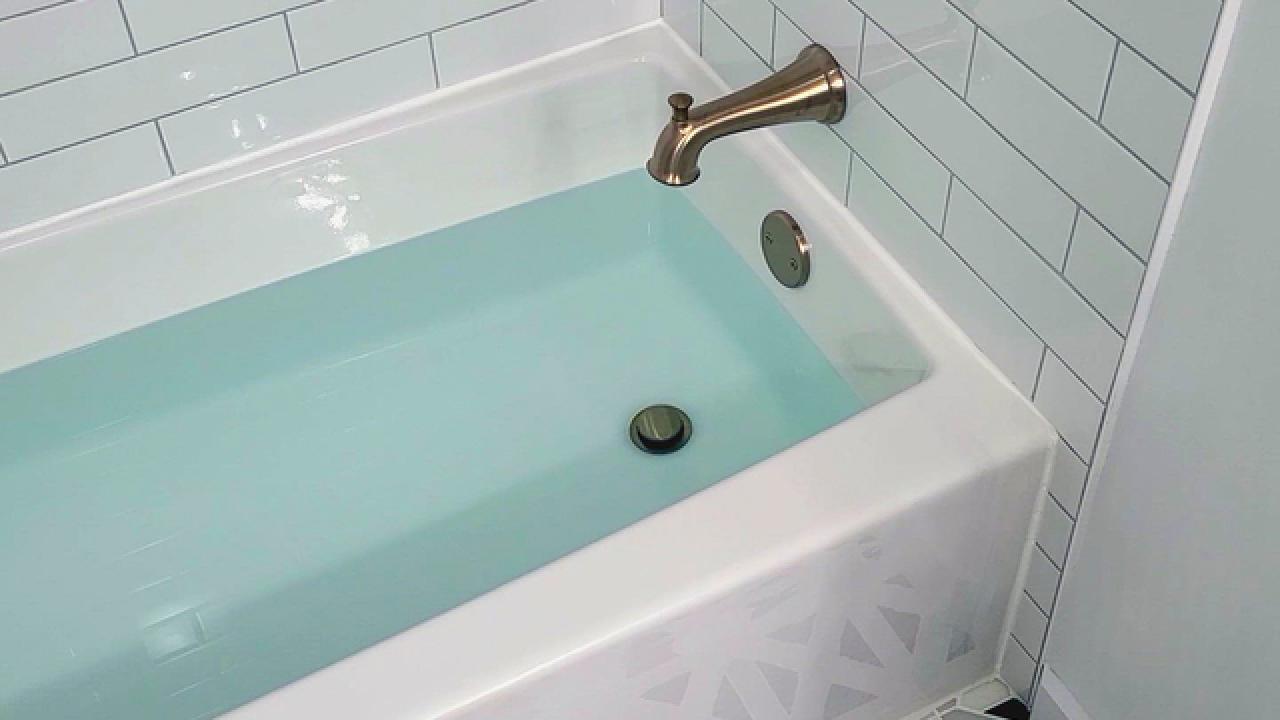Beginner's Plumbing: What You Need for Installing a Bathtub
Beginner's Plumbing: What You Need for Installing a Bathtub
Blog Article
What're your opinions about How to Install a Bathtub: Install an Acrylic Tub and Tub Surround?

Installing a tub isn't precisely brain surgery, yet it does require solid plumbing, carpentry, as well as occasionally, tiling abilities. Changing an old bath tub with a brand-new one is additionally a reasonably hard task. If the old bathtub is easily easily accessible, the job can relocate easily; if you need to open up a wall to remove the old bathtub and also place the new bathtub, the job is much harder. In either case, the task is within a house handyman's skills, although you will certainly need an assistant to vacate the old bathtub and embeded in the brand-new one. Make sure you have certified on your own for the task as well as fit attempting it. Instead of hiring a service provider to take over a halfway-completed job, it is better to consider using one prior to you start. Opportunities are you may require an expert plumber to make tube links.
This short article will certainly help you set up a brand-new bath tub in your bathroom if you have already purchased a new tub as well as don't need to alter the plan of your previous water system pipelines.
Your tools as well as material checklist must make up the following:
Removing Old Touches
If you need to replace old taps with brand-new ones as a part of your setup, then the first thing you need to do is disconnect the water supply. After doing so, turn on the faucets to drain any kind of water staying in the system. The procedure of eliminating the existing faucets can be quite troublesome due to the restricted accessibility that is typically the instance.
Use a basin wrench (crowsfoot spanner) or a faucet device to reverse the nut that links the supply pipelines to the faucets. Have a cloth prepared for the staying water that will certainly originate from the pipelines. As soon as the supply pipes have been removed, use the same tool to loosen the nut that holds the faucets onto the bath/basin. You will certainly require to quit the solitary taps from turning during this procedure. As soon as the faucets have been removed, the holes in the bath/basin will need to be cleaned up of any type of old securing compound.
Before proceeding to fit the brand-new taps, contrast the pipeline links on the old faucets to the new taps. If the old taps are longer than the new faucets, after that a shank adapter is needed for the brand-new taps to fit.
Suitable New Taps
If the tails of the brand-new taps are plastic, after that you will require a plastic connector to stop damage to the string. One end of the connector fits on the plastic tail of the tap and also the other end gives a connection to the existent supply pipes.
If you require to fit a monobloc, after that you will need minimizing couplers, which attaches the 10mm pipeline of the monobloc to the standard 15mm supply pipeline.
Next off, place the tap in the mounting hole in the bath/basin ensuring that the washing machines remain in location between the faucet as well as the sink. Protect the tap in position with the maker offered backnut. Once the faucet is securely in position, the supply pipes can be attached to the tails of the faucets. The taps can either be attached by using corrugated copper piping or with regular tap adapters. The previous kind should be connected to the faucet ends initially, tightening up only by hand. The supply pipelines can later on be attached to the various other end. Tighten both ends with a spanner after both ends have been attached.
Installing the Bathtub
Utilizing both wooden boards under its feet, position the bathtub in the called for position. The wooden boards are handy in evenly spreading the weight of the bathtub over the area of the boards rather than concentrating all the weight onto four little factors.
The following goal is to make sure that the tub is leveled all round. This can be attained by checking the level and also changing the feet on the tub until the spirit level reviews degree.
To set up taps, fit all-time low of the outermost versatile tap adapter to the proper supply pipe by making a compression join; after that do the exact same for the various other faucet.
Switch on the water supply as well as check all joints and also new pipework for leakages and tighten them if essential. Fill up the bath tub and likewise check the overflow outlet and also the regular electrical outlet for leaks.
Finally, deal with the bathroom paneling as defined in the supplier's user's manual. Tiling as well as securing around the bath tub must wait until the tub has actually been made use of at the very least when as this will resolve it right into its final setting.
Planning for the Setup
Firstly, the sustaining structure supplied with the bath must be fitted (if called for) according to the manufacturer's instructions. Next, fit the taps or mixer to the bathtub. When suitable the faucet block, it is necessary to see to it that if the tap includes a plastic washer, it is fitted in between the bathroom and the taps. On a plastic bathroom, it is likewise sensible to fit a sustaining plate under the taps unit to stop stress on the bath tub.
Fit the adaptable tap adapters to the bottom of the two faucets using 2 nuts and also olives (often provided with the tub). Fit the plug-hole electrical outlet by smearing mastic filler round the sink outlet opening, and then pass the outlet with the hole in the bath. Utilize the nut provided by the supplier to fit the plug-hole. Analyze the plug-hole outlet for an inlet on the side for the overflow pipe.
Next, fit the end of the adaptable overflow pipeline to the overflow outlet. After that, screw the pipe to the overflow face which should be fitted inside the bath. See to it you use all of the provided washers.
Attach the trap to the bottom of the waste outlet on the bath tub by winding the thread of the waste outlet with silicone mastic or PTFE tape, and also screw on the catch to the electrical outlet. Link all-time low of the overflow tube in a comparable manner.The bath ought to now be ready to be fitted in its last setting.
Tiling Around the Bathtub
In the location where the bathroom meets the floor tile, it is essential to seal the joins with a silicone rubber caulking. This is important as the installation can move sufficient to break an inflexible seal, triggering the water to pass through the wall in between the bath and also the tiling, resulting in difficulties with dampness and also possible leaks to the ceiling listed below.
You can pick from a variety of coloured sealants to assimilate your fixtures and fittings. They are marketed in tubes and cartridges, and are capable of sealing spaces approximately a size of 3mm (1/8 inch). If you have a bigger void to fill, you can fill it with twists of soaked newspaper or soft rope. Remember to always fill the tub with water prior to securing, to enable the movement experienced when the bathtub remains in use. The sealant can split rather early if you do not take into consideration this activity prior to sealing.
Additionally, ceramic coving or quadrant ceramic tiles can be used to border the bathroom or shower tray. Plastic strips of coving, which are easy to use and also cut to size, are additionally easily readily available on the marketplace. It is advisable to fit the floor tiles utilizing waterproof or water resistant glue and cement.
Bathtub Installation
How Important Is A Bathtub To Your Home?
High-quality baths, showers, and other bathroom updates are necessary when considering a smart investment in your home. It’s a room that you go to every day and one that is constantly being used by guests.The bathroom is one of the top trafficked rooms in a home and also one of the most valuable in terms of home resale.
Install Piping Before Tub
You will be using your existing drain and waste vent system, but pipes required include the hot and cold water supply lines and a pipe leading to a shower head. A mixing valve and shower head are also needed. Air chambers may be required.
Position the Tub
Lower the tub into place so that the continuous flange fits against the wall studs and rests on 1’x4' or 2’x4' supports. Anchor the tub to the enclosure with nails or screws inserted through the flanges into the studs.
NOTE: Remember, bathtubs and shower stalls may require support framing. A bathtub filled with water is extremely heavy, so check building codes and framing support before installing the tub.
Assemble Drain Connections
Assemble the bathtub drain connections by connecting the tub overflow with the tub drain above the trap, not beyond it. The trap will have a compression fitting that screws over the arm of the overflow assembly.
Place a Pipe For the Shower Head
First, locate a brass female threaded winged fitting and attach it to a framing support via a screw or a nail. Then run a pipe up the wall for the shower head. Sweat or solder the other side of the brass fitting to the top of the pipe.
Attaching Hot and Cold Water Lines
Attach your water lines for both hot and cold by sweating these directly into the hot and cold ports of the mixing valve. The mixing valve will be how water enters the tub’s system, not by the pipes themselves.
Install the Spout
Extend a piece of 1/2 inch pipe, or whichever length is specified in the manufacturer’s instructions, for the tub spout. Sweat on a male threaded fitting at the end of the pipe or use a brass nipple of the proper length and a 1/2 inch cap.
NOTE: At this point you should have your rough-in plumbing work inspected before proceeding further.
Check For Leaks
Restore the water pressure and check the drain connection and the supply pipes for any sign of leaking.
estore the Bathroom Wall
Replace the wall with moisture-resistant drywall as a base for your wall covering. Seal the joints between the wall and your new tub with silicone caulk as protection against water seepage.
https://www.berkeys.com/2016/12/02/bathtub-installation-dallas/

I'm very occupied with How to Install a Bathtub Yourself and I hope you liked the entire page. Sharing is nice. Helping others is fun. I praise you for your time. Visit us again soon.
Connect, relax, resolved. Report this page